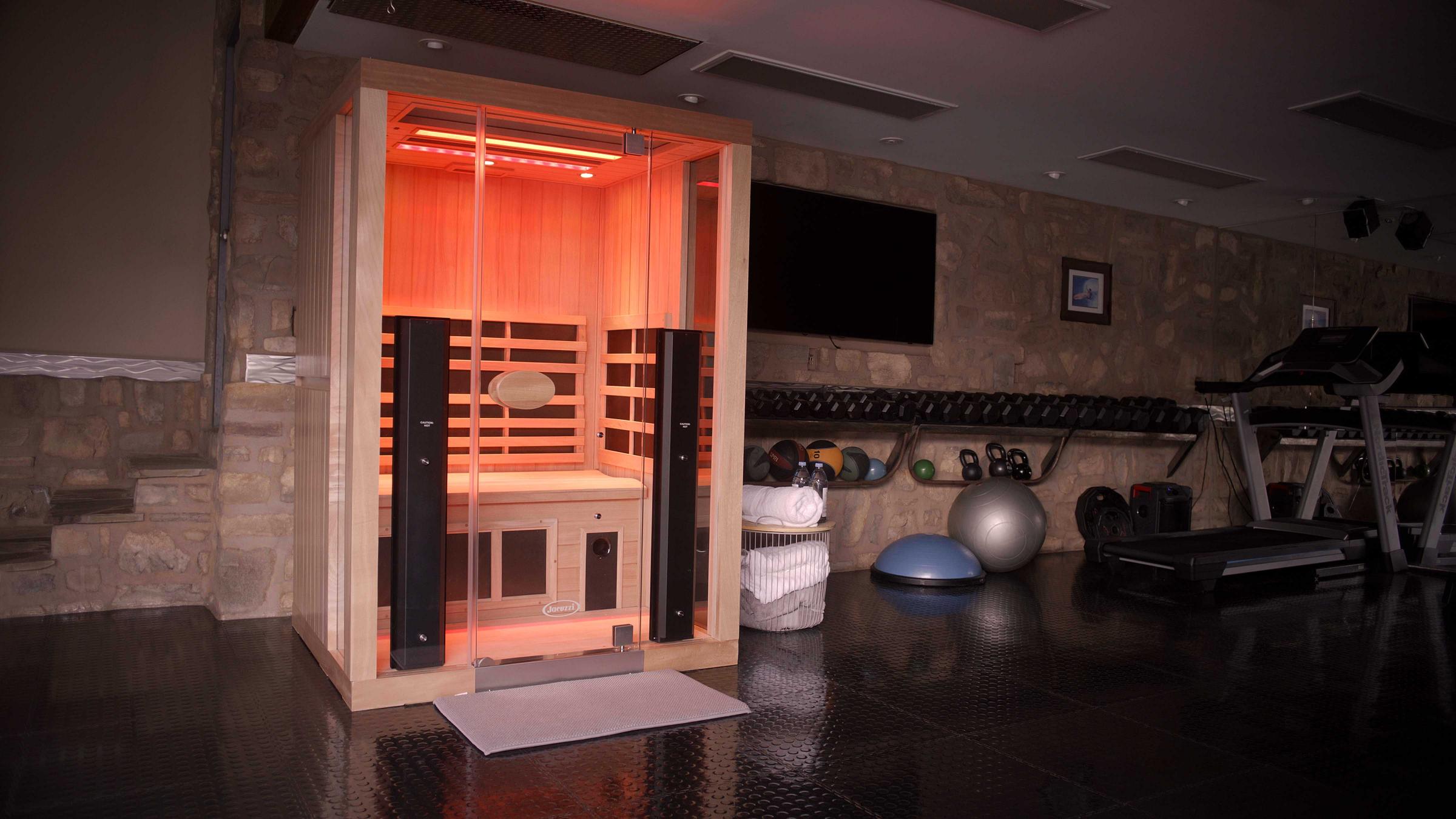How Do Infrared Saunas Work? The Science Behind the Heat

The question many people ask when first hearing about this modern wellness trend is simple: how do infrared saunas work? Unlike traditional steam or dry saunas that heat the air around you, infrared saunas use a unique form of light to create deep, penetrating warmth. This type of heat not only feels different, but it also interacts with the body in a scientifically distinct way. Understanding the mechanics of infrared saunas is essential for anyone considering them as part of a wellness routine.
Infrared saunas have been steadily growing in popularity among health-conscious individuals, athletes, and those seeking relaxation with fewer extremes of heat. While the idea of using light waves to produce warmth may sound futuristic, the science behind infrared saunas is straightforward and rooted in decades of research on thermal radiation and its effects on the human body.
What Are Infrared Saunas?
Infrared saunas differ from conventional saunas in both their heating method and their experience. Instead of stoking a stove or filling a room with steam, an infrared sauna uses panels that emit infrared light. This invisible light spectrum penetrates beneath the skin, creating heat inside the body without dramatically increasing the air temperature in the room.
The result is a comfortable, soothing warmth that allows people to sweat and experience therapeutic effects without the intensity of traditional sauna heat. This distinction has made infrared saunas especially appealing for individuals who find it difficult to tolerate the extreme temperatures of conventional saunas.
What’s the Difference Between Infrared and Traditional Saunas?
One of the most frequently asked questions is how infrared saunas compare with their traditional counterparts. While both are designed to induce sweating and relaxation, their mechanics and user experience vary in significant ways.
Traditional Saunas:
- Heat Source: Typically wood-burning stoves or electric heaters.
- Air Temperature: Often ranges from 160°F to 200°F.
- Mechanism: Heat warms the air, and the hot air in turn warms the body.
- Experience: Can feel intense due to the extreme temperature and heavy atmosphere.
Infrared Saunas:
- Heat Source: Infrared panels emit light waves.
- Air Temperature: Generally ranges from 110°F to 150°F.
- Mechanism: Infrared light penetrates skin and tissue directly, producing internal warmth.
- Experience: More gentle, allowing users to stay inside longer with less discomfort.
While traditional saunas create an external heat environment that the body adapts to, infrared saunas provide a direct, penetrating form of warmth that works from within. Both approaches are valid, but infrared options often feel more accessible to those new to sauna therapy.
How Does Infrared Light Heat the Body?
Infrared saunas rely on a specific spectrum of light that lies just beyond visible red light. These waves are experienced as heat when absorbed by the skin and tissues. Unlike ultraviolet light, which can damage the skin, infrared light is safe and therapeutic.
When infrared light penetrates the skin, it vibrates molecules, producing heat at a cellular level. This warmth stimulates circulation, encourages sweating, and creates many of the same physiological responses as traditional heat exposure.
To understand this better, think of standing in the sun on a cool day. Even though the air is brisk, the sunlight feels warm on your skin. That warmth is infrared radiation at work, transferring energy directly to your body without needing to heat the surrounding air.
What Temperatures Do Infrared Saunas Typically Reach?
Another common question concerns temperature. Infrared saunas are generally cooler than traditional models, but that does not mean they are less effective.
Infrared sauna temperatures usually fall between 110°F and 150°F. While this is significantly lower than the 160°F to 200°F found in traditional saunas, the internal heating effect from infrared light produces deep warmth and comparable sweating responses.
This moderate temperature makes infrared saunas comfortable and accessible. Many users find they can stay inside longer, enhancing relaxation and potentially amplifying benefits like improved circulation, detoxification through sweat, and muscle recovery.
The Science of Sweating in Infrared Saunas
Sweating is the body’s natural way of cooling and cleansing itself. By gently raising core temperature, infrared saunas promote perspiration without placing stress on the cardiovascular system in the way that higher heat can.
Infrared light stimulates the sweat glands by heating tissue beneath the skin, creating an efficient and steady sweat response. This process may support detoxification by encouraging the release of trace heavy metals and toxins stored in fat cells. Additionally, it helps the body regulate temperature and maintain balance.
Circulation and Cardiovascular Support
Another significant aspect of infrared sauna science is its effect on circulation. As tissues warm, blood vessels dilate, increasing blood flow throughout the body. This vasodilation encourages oxygen delivery to muscles and tissues, supporting recovery after exercise and reducing stiffness.
Some studies suggest that the mild cardiovascular stimulation from regular infrared sauna use mimics aspects of moderate exercise. By gently elevating heart rate and promoting circulation, infrared saunas can provide cardiovascular support for individuals unable to engage in intense physical activity.
Muscle Recovery and Joint Relief
Athletes and active individuals often turn to infrared saunas as a recovery tool. The penetrating heat helps relax muscles, ease soreness, and reduce inflammation. Because infrared light warms tissues directly, it may penetrate deeper into muscles than traditional surface heating methods.
For individuals with arthritis, chronic pain, or stiffness, this gentle internal warmth can reduce discomfort and improve flexibility. Many people find infrared sauna sessions to be an effective complement to physical therapy or regular exercise routines.
Relaxation and Stress Reduction
While much of the discussion centers on physical health, it’s important not to overlook the mental and emotional benefits of infrared saunas. The soothing warmth promotes relaxation, reduces tension, and creates a quiet environment for mindfulness.
By lowering cortisol levels and encouraging the release of endorphins, infrared sauna use can support stress relief. This makes it an appealing option not only for athletes or those managing pain but also for anyone seeking balance in a fast-paced lifestyle.
Detoxification: A Common Misunderstanding
One of the most marketed benefits of saunas is detoxification. While the body’s liver and kidneys are the primary detox organs, sweating plays a secondary role. Research shows that certain toxins, including trace heavy metals and BPA, can be excreted through sweat.
However, it is important to note that no sauna, infrared or traditional, replaces the body’s natural detox systems. Instead, regular sweating can support overall wellness by lightening the load on other systems and helping the body maintain equilibrium.
How Infrared Saunas Differ in Experience
The user experience is one of the most noticeable differences. In a traditional sauna, the intensity of the hot air can feel overwhelming, especially for beginners. Breathing in 180°F air can be uncomfortable, and many people need to take breaks.
Infrared saunas create a gentler, more tolerable environment. Because the air temperature is lower, users can breathe comfortably, stay inside longer, and enjoy a steady, soothing warmth that feels less aggressive but just as effective.
Are Infrared Saunas Safe?
Safety is a frequent concern. The good news is that infrared saunas are considered safe for most healthy adults when used responsibly. The infrared spectrum does not include harmful ultraviolet rays, and the lower temperatures reduce the risk of overheating.
That said, as with any wellness practice, moderation is key. Staying hydrated, limiting session lengths, and listening to your body are important. Individuals with cardiovascular conditions, chronic illnesses, or who are pregnant should consult a healthcare provider before use.
Who Benefits Most from Infrared Saunas?
Infrared saunas appeal to a wide range of users. Athletes often use them for recovery. Busy professionals enjoy the stress relief. Older adults or those with mobility limitations find the moderate temperatures more accessible than traditional saunas.
Infrared saunas also attract people who are simply looking for a convenient way to unwind, improve skin tone, or support overall wellness. Their versatility makes them a practical addition to both personal and commercial spa settings.
Practical Considerations for Use
For anyone considering infrared saunas, there are a few practical details to know:
- Session Length: Most sessions last 20 to 45 minutes.
- Frequency: Many users benefit from 2 to 4 sessions per week, depending on goals.
- Hydration: Drinking water before, during, and after sessions is crucial.
- Clothing: Light clothing or towels allow for optimal heat absorption.
By following these simple guidelines, users can maximize benefits while minimizing risks.
Why Infrared Saunas Are Growing in Popularity
The rise of infrared saunas is tied to the broader trend of personalized wellness. People are seeking practices that fit into busy lives, offer measurable benefits, and provide relaxation without strain. Infrared saunas meet these criteria by combining science-based heat therapy with a comfortable, accessible design.
Fitness centers, spas, and even private homes now incorporate infrared saunas, reflecting their appeal across demographics. As awareness spreads, more people are asking about the science behind these devices and finding compelling reasons to try them.
The Science Behind the Heat
Infrared saunas represent a modern evolution of an ancient practice. By using light to heat the body directly, they offer many of the same benefits as traditional saunas in a more comfortable package. From improved circulation to muscle recovery, relaxation, and gentle detox support, the science of infrared heat provides a strong foundation for its popularity.
So, how do infrared saunas work? Simply put, they use safe infrared light to penetrate tissue, gently raising body temperature and stimulating natural responses like sweating, circulation, and relaxation. While they differ from traditional saunas in experience and mechanics, they share the same goal: promoting wellness through heat therapy.
Contact Us Today
If you are intrigued by the benefits of infrared saunas and are considering ways to enhance your wellness routine, it may be time to explore spa solutions for your own property. If you’re looking for high-quality pool and hot tub products for your property in the Aspen area, turn to our team at Ajax Pool & Spa Aspen today. We are dedicated to delivering premium products and personalized service to help you create the ultimate relaxation and wellness experience.
